First-Timer’s Handbook to Beijing Panjiayuan Market
Welcome to your first trip to Beijing Panjiayuan Market! You walk into a place that feels like a museum that is alive. It is full of history and culture.
You see areas with old furniture, ceramics, paintings, and folk crafts.
There are over 3,000 stalls with rare items and handmade things.
You feel excited as you look around each area. You talk with local sellers and search for something special. If you want a deeper and more real experience, China Explorer Tour can help you find hidden treasures and learn about local culture.
Key Takeaways
Go to Panjiayuan Market on weekends for the best time. There are more sellers and special things to see then.
Bargaining is fun at the market! Start with a smile, check prices first, and do not be afraid to ask for a lower price.
Take public transport, like the subway, to get to the market. Line 10 will bring you right to Panjiayuan Station.
Walk around different parts of the market to find antiques, art, and cool souvenirs. Each section has its own special things.
You can join a guided tour with China Explorer Tour for a better visit. A local guide can help you find hidden treasures and tell you about the market's history.
Beijing Panjiayuan Market Guide
Why Visit
You may ask why panjiayuan market is special. This busy second-hand market is full of history and culture. When you go inside, you see more than old things. You find stories, traditions, and a lively group of collectors and sellers. Here are some reasons people like to visit:
You can look at many antiques and collectibles.
The market lets you bargain for rare items you will not find elsewhere.
The busy feeling makes shopping fun and exciting.
If you like history, you will enjoy seeing rare things and learning about them.
Panjiayuan market was once called the 'dirt market.' Peasants sold things they found in the ground. Now, it is a busy flea market with many sellers offering antiques and paintings.
You can spend a long time looking for special things. Many people say they leave with something cool, like art, an old trinket, or a new story to tell.
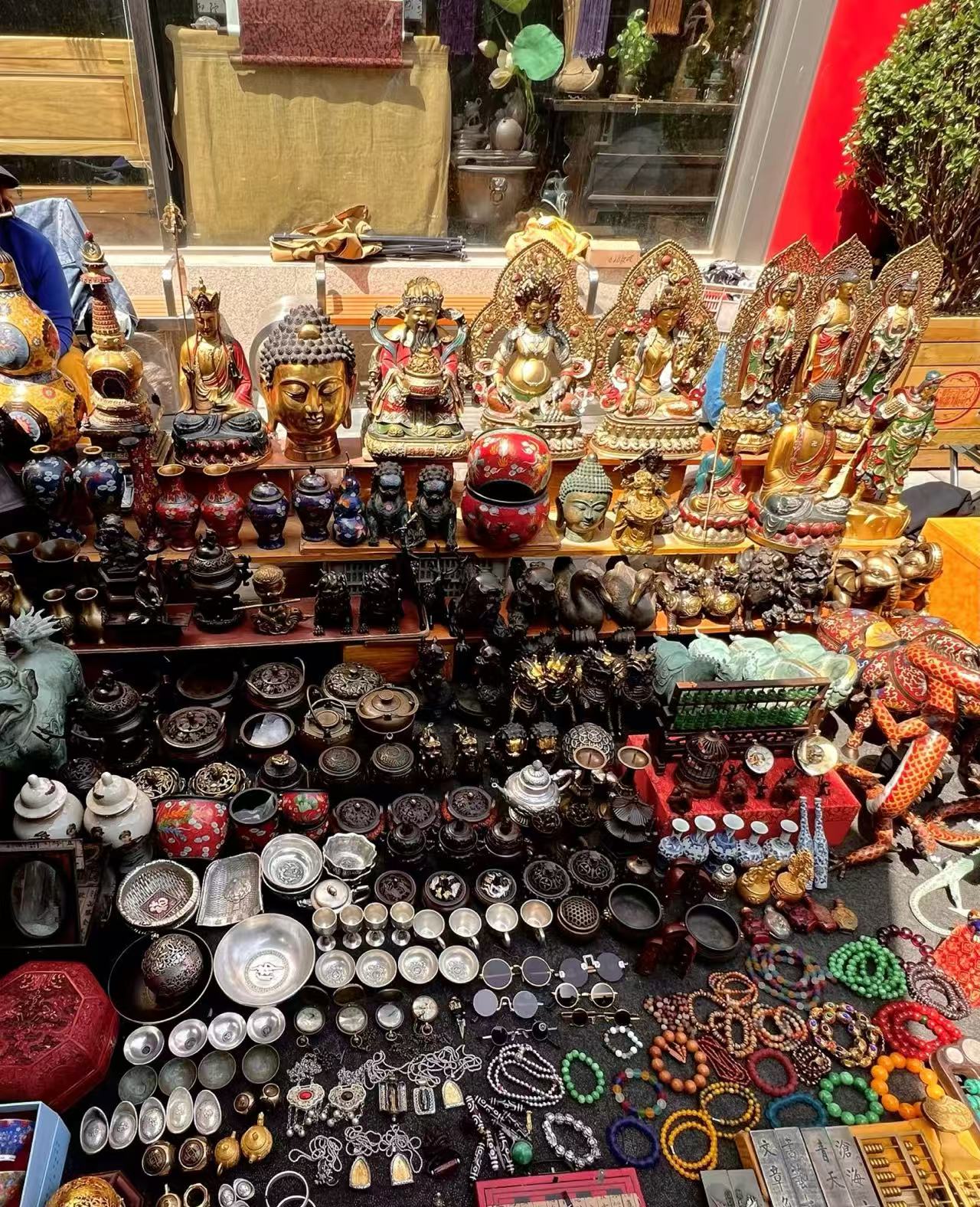
Market Atmosphere
When you enter panjiayuan market, you feel the energy right away. The place is busy but also calm.
You hear traders calling out and see people bargaining with happy faces.
The market feels a little wild, which makes it fun to visit.
The arts and crafts area on weekends is extra lively.
You see all kinds of goods everywhere you look.
Some sellers wear traditional clothes, making the place unique.
The stalls have many surprises, like old coins and bright paintings.
You might see artists drawing, collectors talking, or families having fun. The market makes you want to slow down and enjoy what you see and hear. Panjiayuan market is more than a place to shop. It is a place to see Beijing’s local life up close.
How to Get There
Getting to Panjiayuan Market is easy once you know your options. You can use public transport or take a taxi. Here’s how to get to panjiayuan without stress.
Public Transport
The subway is the fastest way for most travelers. You avoid traffic and arrive right at the market’s doorstep. Here’s a quick look at the best subway line and station:
Subway Line | Station Name |
|---|---|
Line 10 | Panjiayuan |
You just hop on Line 10 and get off at Panjiayuan Station. Use Exit B. When you come out, you will see signs pointing to the market. The walk takes only a few minutes.
If you prefer the bus, several lines stop near the market. Here are the main entry points and transport options:
Entry Point | Transportation Options |
|---|---|
Subway | Line 10, Exit B |
Bus | 28, 378, 638, Yuntong 107, Yuntong 107 Express, Night Bus 30 |
You can catch any of these buses and get off at the Panjiayuan stop. The bus stop sits right by the market entrance.
Tip: Download a translation app before you go. It helps you read signs and ask for help if you get lost. Here are some popular choices:
Google Translate: Great for camera and phrase translation, but you need a VPN in China.
Microsoft Translator: Works without a VPN and is easy to use.
WeChat & Alipay Translate: Handy for quick translations and used by many travelers.
These apps make your trip smoother and help you feel more confident as you explore.
Taxi and Ride-Share
If you want a direct ride, taxis and ride-share apps like Didi are a good choice. You just show the driver the Chinese name for Panjiayuan Market (潘家园旧货市场) or enter it in your app. Most drivers know the market well.
Here’s how to get to panjiayuan by taxi:
Tell the driver “Panjiayuan Jiuhuo Shichang.”
Show the address on your phone if needed.
Ask to be dropped off at the main entrance near Subway Line 10, Exit B. This is the easiest spot for first-time visitors.
Taxis are safe and not expensive for short trips in Beijing. Ride-share apps let you pay by card or mobile wallet, which is handy if you don’t have cash.
Note: If you want a worry-free trip, China Explorer Tour can arrange a private transfer or even a guided visit. You skip the hassle of directions and enjoy expert tips for navigating panjiayuan market. Their guides know the best entry points and can help you find hidden gems inside the market.
No matter which way you choose, you will find that how to get there is simple with a little planning. Use these tips to start your adventure with confidence!
What to Expect at Panjiayuan Market
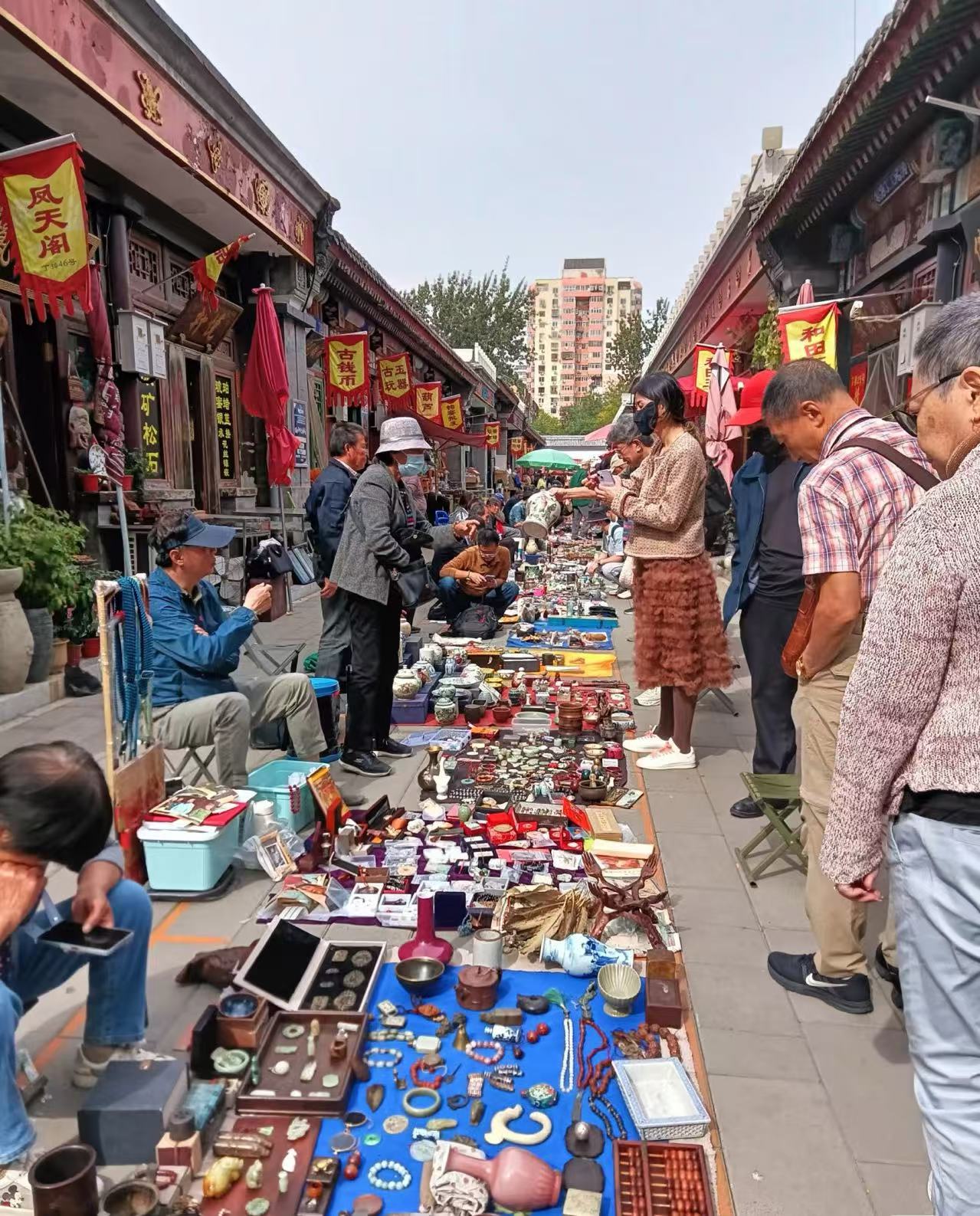
Market Layout
When you walk into panjiayuan market, you might be surprised by how big it is. The market is huge, about 520,000 square feet.
There are more than 3,000 stalls and shops in this space. It can feel like a maze, but each part is interesting.
Here is a simple guide to help you know where to go:
Section | Specialization |
|---|---|
Antique Furniture Section | Antique furniture items |
Antique Ceramics Section | Antique ceramics |
Antique Painting and Calligraphy | Paintings and calligraphy pieces |
Folk Crafts Section | Traditional folk crafts |
You will also notice:
The main area is partly covered and open on weekends. It has four zones.
The west side is outside and has big stone sculptures.
There is a two-story building with both modern and old furniture.
In the south, a small lane has secondhand books and old scrolls.
The east has a big yard with ancient art and artifacts.
The north and east have small indoor stores with the best antiques.
If you get confused, just follow other people or ask a vendor for help. The way the market is set up makes it easy to explore and find new things.
Types of Stalls
There are many kinds of stalls at panjiayuan market. Some sell used things, and others have antiques, crafts, or collectibles. You might see calligraphy, Chinese paintings, writing brushes, ivory carvings, and musical instruments. Some aisles have old furniture, and you can find special crafts from different ethnic groups.
Here are some things you might find:
Over 3,000 booths with items from 24 places in China.
Handicrafts made by many ethnic groups.
Rare things like old coins, jade, porcelain, and vintage jewelry.
Panjiayuan market is different from other markets in Beijing. It is known for antiques, arts, and crafts. For example:
Market Name | Focus Area |
|---|---|
Panjiayuan Market | Antiques, arts, and crafts |
Silk Market | Clothing and fake goods |
Pearl Market | Clothing, accessories, and gadgets |
You can spend a long time looking at all the stalls. Watching people is fun too. You will see collectors, artists, tourists, and locals all searching for something cool. The place feels busy, and every spot has a story.
Best Times to Visit
If you want to know when to visit, weekends are best. The market is busiest on Saturdays and Sundays. More sellers come, and you can see more things. The main area is only open on weekends, so there is more to do then.
Weekdays are quieter. You can still shop, but some stalls might be closed. If you like it calm and want fewer people, go on a weekday. Early mornings are good for finding rare things before others get there.
Tip: The busiest time is from 8:00 am to noon on weekends. Go early to see the most and feel the market’s excitement.
If you want to enjoy your visit more, you can join a local guide from China Explorer Tour. A guide can help you find your way, tell you stories about the items, and help you bargain. You will find hidden treasures and learn more about panjiayuan market than if you went alone.
So, when you think about what to expect at panjiayuan market, get ready for a fun and colorful adventure. Every visit is different, and you never know what you will find.
What to Buy at Panjiayuan
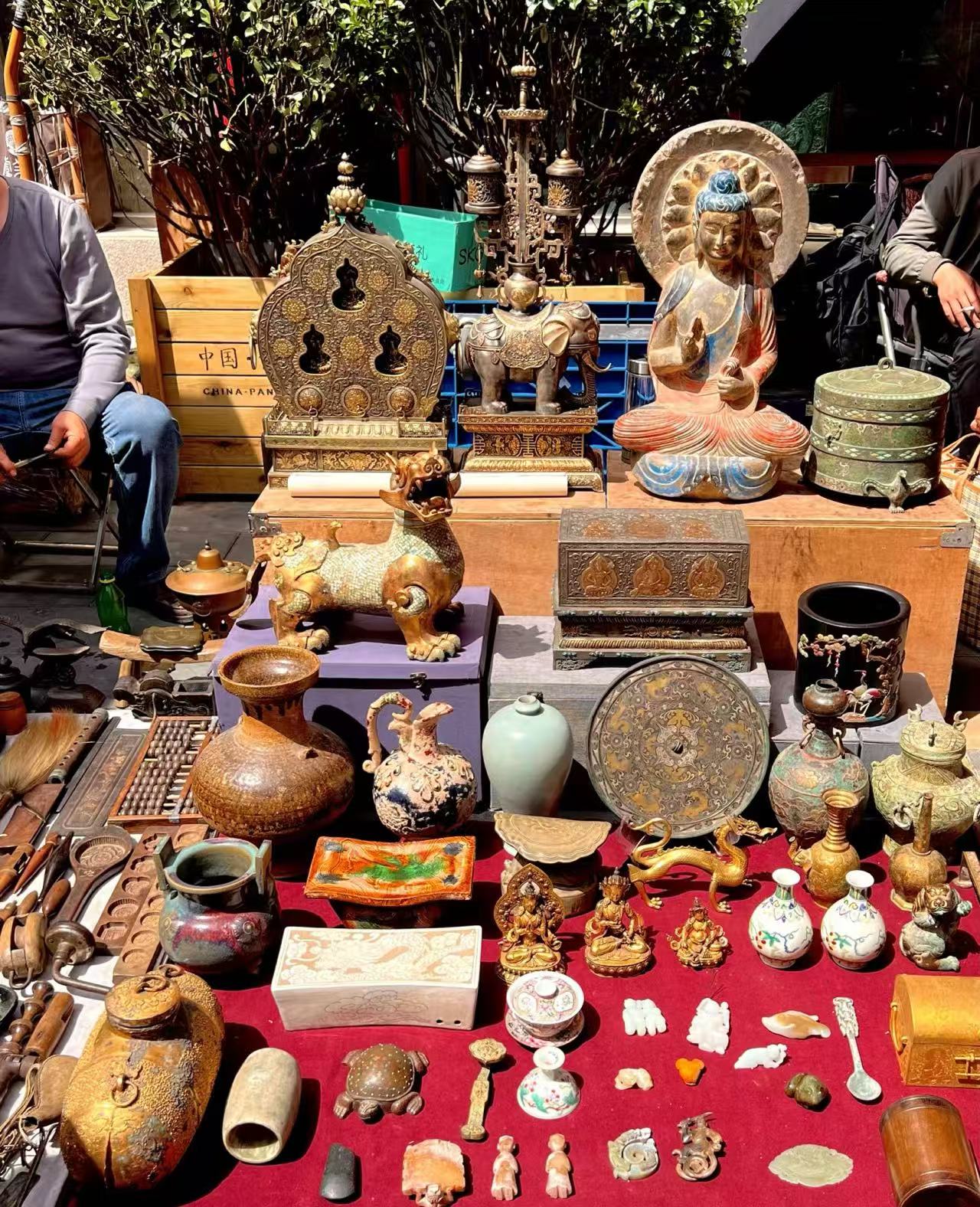
When you walk into panjiayuan market, you might not know what to buy. There are so many things everywhere you look.
You see antiques, art, collectibles, and souvenirs all around you.
Let’s talk about the best things to check out at panjiayuan market so you can find something cool.
Antiques and Art
If you like old things, you will see antiques in every part of the market. You notice jade bracelets, bead necklaces, pottery, coins, and porcelain. Antique furniture and Tibetan trunks stand out. Books and scrolls fill up many shelves. You can walk through these areas:
Antique Furniture Section
Antique Ceramics Section
Antique Painting and Calligraphy Section
Folk Crafts Section
You should make sure your antiques are real. Look for a red wax seal called jianding. This seal shows your item is real and lets you take it home. Antiques made before 1949 are special, so you need government approval to bring them out of China. Always check before you buy anything. There are many copies and fake items, so be careful.
Collectibles and Curios
Panjiayuan market feels like a museum with lots of surprises. You find cool things in every row. There are cultural collectibles and things that look old but are not. Mao statuettes, jade jewelry, and wooden Buddhist statues catch your eye. You also see ceramic pottery, Tibetan artifacts, and Chairman Mao items. Military gear from the People’s Liberation Army and old gramophones are there too. Chinese swords and writing brushes sit near ivory carvings and musical instruments. You spot calligraphy, Chinese paintings, and old furniture. Each thing has its own story.
Souvenirs
You may want to buy something to remember your trip. Panjiayuan market has souvenirs that show China’s culture. Here are some good choices:
Item | Description |
|---|---|
Jade Figurines | These are small jade figures with lots of detail. |
Porcelain Vases | These vases are delicate and very pretty. |
Antique Furniture | Look for old furniture with fancy designs. |
Traditional Chinese Paintings | You can find many beautiful scrolls and calligraphy here. |
You also see painted snuff bottles, Beijing palace lanterns, and Chinese jewelry made from jade, gold, silver, and pearls. Cloisonne items, like teapots and vases, use special art styles. Chinese calligraphy wall scrolls are nice gifts. Some things, like snuff bottles and cloisonne, have a long history in China.
Tip: Take your time and look at each area. You might find something amazing. Panjiayuan market is full of fun surprises!
Bargaining Tips
Bargaining is part of the fun at panjiayuan market. If you want to get the best deals, you need to know how to bargain with confidence. Many vendors expect you to negotiate, so don’t feel shy about it. Here’s how to bargain at panjiayuan market and walk away with a smile.
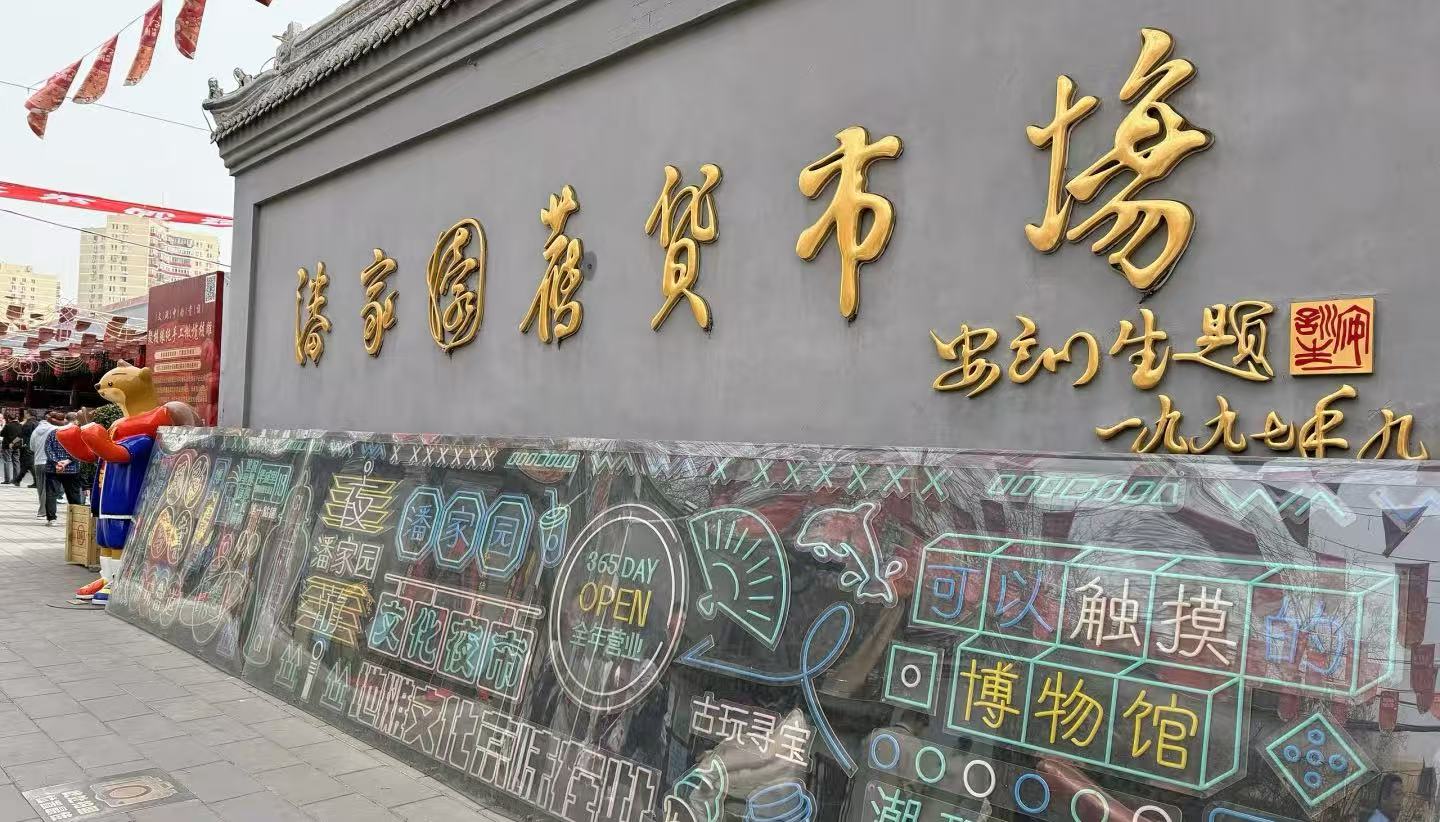
How to Negotiate
You can use several smart strategies when you start bargaining. Try these tips to help you get a better price:
Start with a smile. A friendly attitude helps you build trust with the seller.
Do your research. Check prices at a few stalls before you buy. This helps you know what’s fair.
Ask for the “last price” by saying “最后价” (zuìhòu jià). This shows you are serious and ready to buy.
End your offer with an “8.” Prices ending in 8 are lucky in China and sound more final.
Use silence. After you say your price, stay quiet. Sellers often lower the price to fill the silence.
Bundle items. If you buy from two stalls, ask if both sellers will give you a better deal.
Pay instantly. Show your phone ready to scan the QR code. Sellers may drop the price if they see you are ready to pay.
Be patient. Sometimes, walking away brings a better offer.
Tip: The best deals often happen before lunch or near closing time. Sellers want to make sales during slow hours.
Learning how to bargain takes practice, but you will get better each time you visit panjiayuan market.
Payment Methods
When you finish bargaining, you need to know how to pay. Most vendors at panjiayuan market accept mobile payments like WeChat Pay or Alipay. You just scan the seller’s QR code and pay in seconds. Many shoppers use their phones, and you will see blue QR codes everywhere.
Mobile payments are quick and easy. Most vendors prefer them.
Cash is still welcome, especially with older sellers. Some people feel more comfortable using cash.
If you use cash, bring small bills. Vendors may not have change for large notes.
Note: If you are new to mobile payments, ask your guide from China Explorer Tour for help. They can show you how to set up your phone and make your first payment.
No matter which way you pay, you will find shopping at panjiayuan market simple and fun once you know the basics.
Food Near Panjiayuan Market
Exploring Panjiayuan Market can make you hungry. You might wonder about the recommended food near panjiayuan. Good news—there are plenty of tasty options, both inside the market and just a short walk away. Let’s look at what you can try.
Market Snacks
You will find lots of snacks right inside the market. These treats are quick, cheap, and perfect for a break between shopping. Many visitors love to grab a bite while they wander. Here are some favorites you should try:
Snack Item | Price (¥) | Price (S$) |
|---|---|---|
Purple Rice Pan Crepe | 4.50 | 0.90 |
Melon Fruit | 1.00 | 0.20 |
The purple rice pan crepe tastes sweet and chewy. It fills you up and gives you energy to keep exploring. Melon fruit is cool and juicy, which feels great on a hot day. You can find these snacks at small stalls or carts around the market. If you want to try more recommended food near panjiayuan, just follow your nose. The smell of fresh pancakes and grilled treats will lead you to something delicious.
Tip: Bring some small bills or have your mobile payment ready. Most snack vendors move fast and like quick payments.
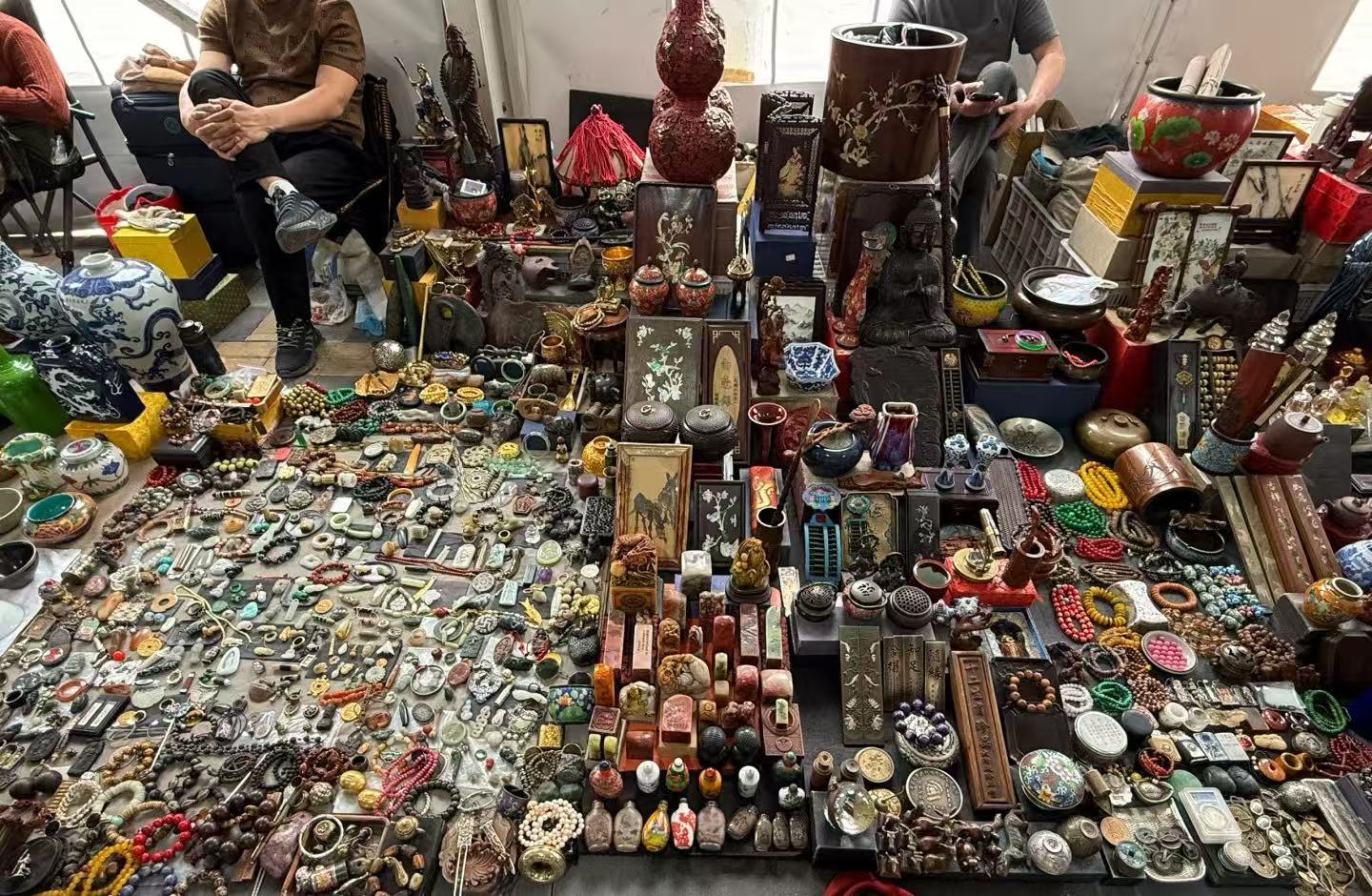
Nearby Restaurants
If you want a bigger meal or a place to sit down, you have many choices close to the market. Wondering where to eat and drink near panjiayuan market? Here are some highly rated spots that visitors love:
SHENG YONG XING: This place is known for its good prices and tasty dishes. You can find it at 5 Xindong Lu.
CRESCENT MOON: Try their famous lamb skewers. It’s a Uighur-run spot at 16 Dongsiliutiao.
DALI COURTYARD: If you want something different, this restaurant serves food from Yunnan province. It’s at No.67 Xiaojingchang Hutong.
HAI DI LAO: Hotpot fans will enjoy this popular chain at 2A, Baijiazhuang Lu.
TRB: For a fancy meal, check out TRB at 23 Shatan Beijie or Donghuamen.
You can find something for every taste, from spicy lamb to fresh Yunnan veggies. These places are easy to reach by taxi or subway. After a long morning at the market, a good meal will help you recharge for more adventures.
Local Experiences with China Explorer Tour
Tailored Tours
You want your trip to Panjiayuan Market to be special. China Explorer Tour can help you do more than shop. Their half-day tour lets you learn about the market’s history and art. You walk with a local guide who knows many stories. You see old porcelain, jade carvings, and rare antiques. Your guide tells you what each item means. You find out how these things connect to Chinese traditions.
China Explorer Tour uses smart tools to match your likes. You get a tour that fits you. If you like art, your guide shows you paintings and calligraphy. If you want to see antiques, you visit stalls with old pieces. You ask questions and get answers fast. The tour feels easy and made just for you.
Tip: You can join a small group or book a private tour. Both ways let you go at your own speed and find cool things.
Customer Story: Hanfu Photoshoot
Picture yourself wearing a Qing Dynasty outfit in Beijing. Kate, who traveled alone, did this with China Explorer Tour. She wanted a fun memory, so she booked a Hanfu photoshoot. The team helped her pick a red dress. They set up styling and took her to old places.
Kate’s guide spoke English and made things easy. She learned about Hanfu and what each part means. The photographer gave her tips for posing. Kate felt happy and relaxed. Her photos showed the beauty of old China.
You can try this too. China Explorer Tour takes care of everything, like fitting and translation. You get great photos and a story to tell. The Hanfu photoshoot lets you enjoy Chinese culture and make memories that last.
Nearby Attractions
What Else to See
You might wonder what else you can explore after shopping at Panjiayuan Market. Luckily, you have many choices. Some of the best other attractions near panjiayuan market are just a short ride away. You can visit the Beijing Capital Museum, which has ancient relics and beautiful art. The museum helps you learn more about the city’s long history.
If you like parks, Longtan Park sits nearby. You can walk around the lake, watch locals play chess, or just relax in the gardens. The Temple of Heaven is also close. This famous site lets you see where emperors once prayed for good harvests. You can watch people practice tai chi or fly kites in the open spaces.
Tip: If you want to see more, ask your guide from China Explorer Tour for advice. They know the best routes and can help you plan a smooth day.
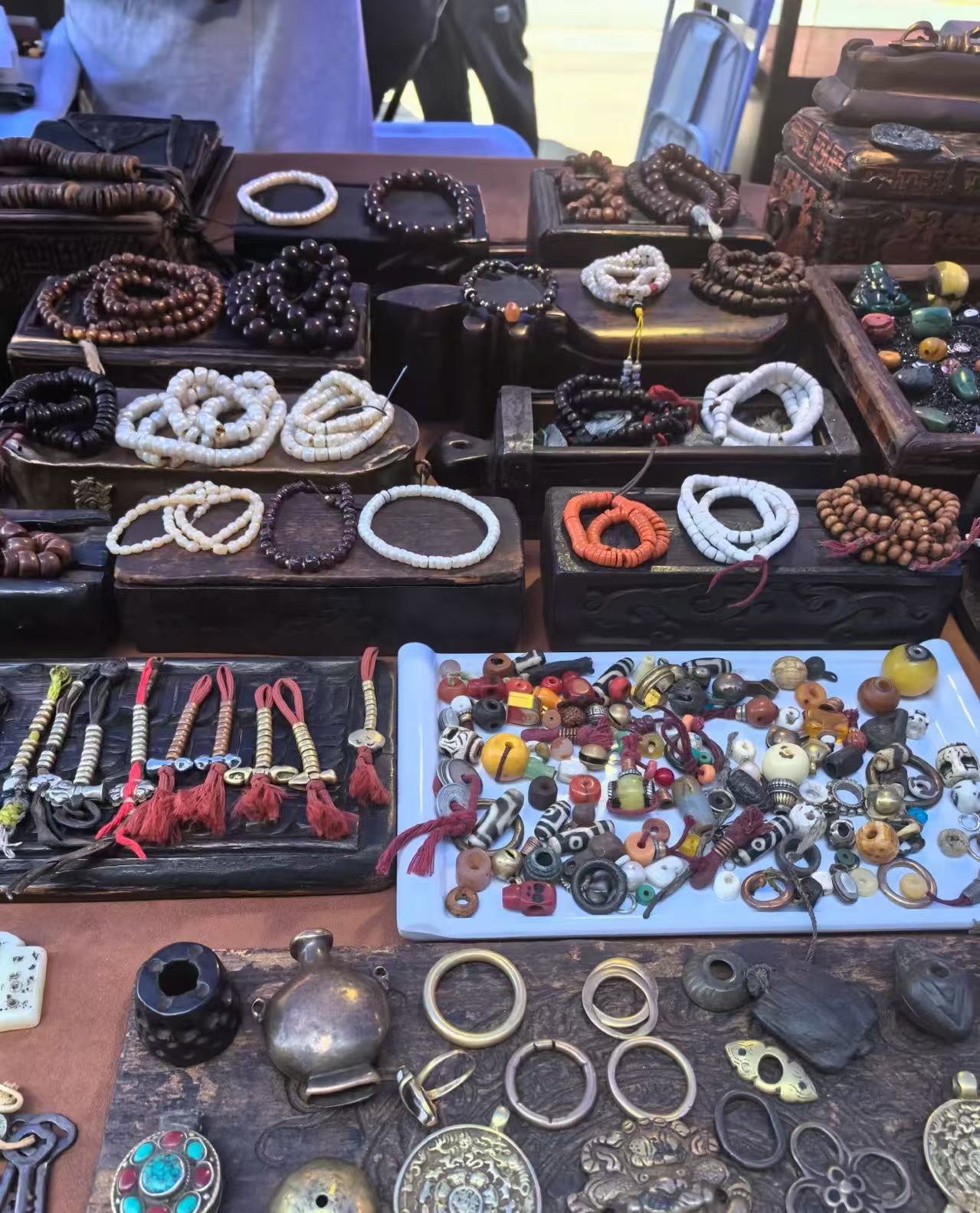
Combining Your Visit
You can easily turn your trip to Panjiayuan Market into a full day of adventure. Many travelers like to mix shopping with culture and food.
Here’s a sample itinerary that shows how you can enjoy other attractions near panjiayuan market and make the most of your time:
Time | Activity | Description |
|---|---|---|
9:00 am | Pickup from hotel | Your friendly guide meets you at your hotel for a smooth start. |
Morning | Visit Panjiayuan Antique Market | Explore the lively market, find treasures, and learn to bargain with expert help. |
Lunch | Beijing-style lunch | Enjoy local dishes like noodles and dumplings at a nearby restaurant. |
Afternoon | Visit Beijing Capital Museum | Discover ancient artifacts and learn about Beijing’s rich history. |
5:00 pm | Return to hotel | Head back with your guide, ending a fun and easy day. |
You can swap the museum for a park or temple if you prefer. With China Explorer Tour, you get a guide who helps you see more and worry less. You enjoy a day filled with shopping, culture, and tasty food—all at your own pace.
You want your first trip to panjiayuan market to be smooth and fun. Here are some key tips:
Arrive early to spot unique finds.
Bargain with respect and a smile.
Bring cash for easy payments.
You will see open-air stalls with antiques, shops with furniture, and covered pavilions full of handcrafted treasures. Embrace the adventure at beijing panjiayuan market. With China Explorer Tour, you get expert help and a richer experience. Start planning your journey and enjoy every moment!
FAQ
How do I know if an antique is real at Panjiayuan Market?
You can look for a red wax seal called jianding on antiques. This seal means the item is authentic. If you want extra help, ask a local guide from China Explorer Tour to check items with you.
Can I use credit cards at Panjiayuan Market?
Most vendors prefer mobile payments like WeChat Pay or Alipay. Some accept cash. Credit cards are not common here. Bring small bills or set up a mobile wallet before you go.
Is Panjiayuan Market open every day?
Yes, the market opens daily. Weekends are the busiest and have the most stalls. If you want a quieter visit, try going on a weekday morning.
What should I wear when visiting the market?
Wear comfortable shoes. You will walk a lot. Dress in layers if you visit in spring or fall. Bring a hat or sunscreen for sunny days.
Can I join a guided tour of Panjiayuan Market?
Yes! China Explorer Tour offers guided visits. A local expert can help you find hidden treasures, bargain with vendors, and learn about the market’s history. You can book a private or group tour.
